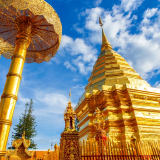Wat Phrathat Doi Suthep
When people come to visit Chiang Mai, it is really easy to enjoy the ancient town life so much that you can forget to get out or explore a little more. Doi Suthep is known as one of the most famous sites in Chiang Mai and also well worth the visit. Doi Suthep just sits outside of town. This small mountain is adorned with the gorgeous temple at the top. If the temple and view were not enough, there is also Huay Kaew Waterfall’s natural beauty for travelers to
Initially known as Doi Aoy Chang, Doi Suthep - Pui National Park is named after the mountains on which the hermit Sudeva lived on its slopes for many years. Approximately 435 miles or 700 kilometers North of Bangkok lies the city of Chiang Mai. As mentioned above, Chiang Mai, which translates in a rough way to ‘New City’, is the capital of its provincial namesake as well as the largest city of Northern Thailand. On the other hand, before it was acknowledged by its current name of Chiang Mai, the city was the Lan Na Kingdom’s capital between the late 13th century and late 18th century, succeeding Chiang Rai, hence the name “New City”. After the decade later, it turned into Siam’s tributary state until the beginning of the 20th century and, eventually, become the home of the royal monarchs.
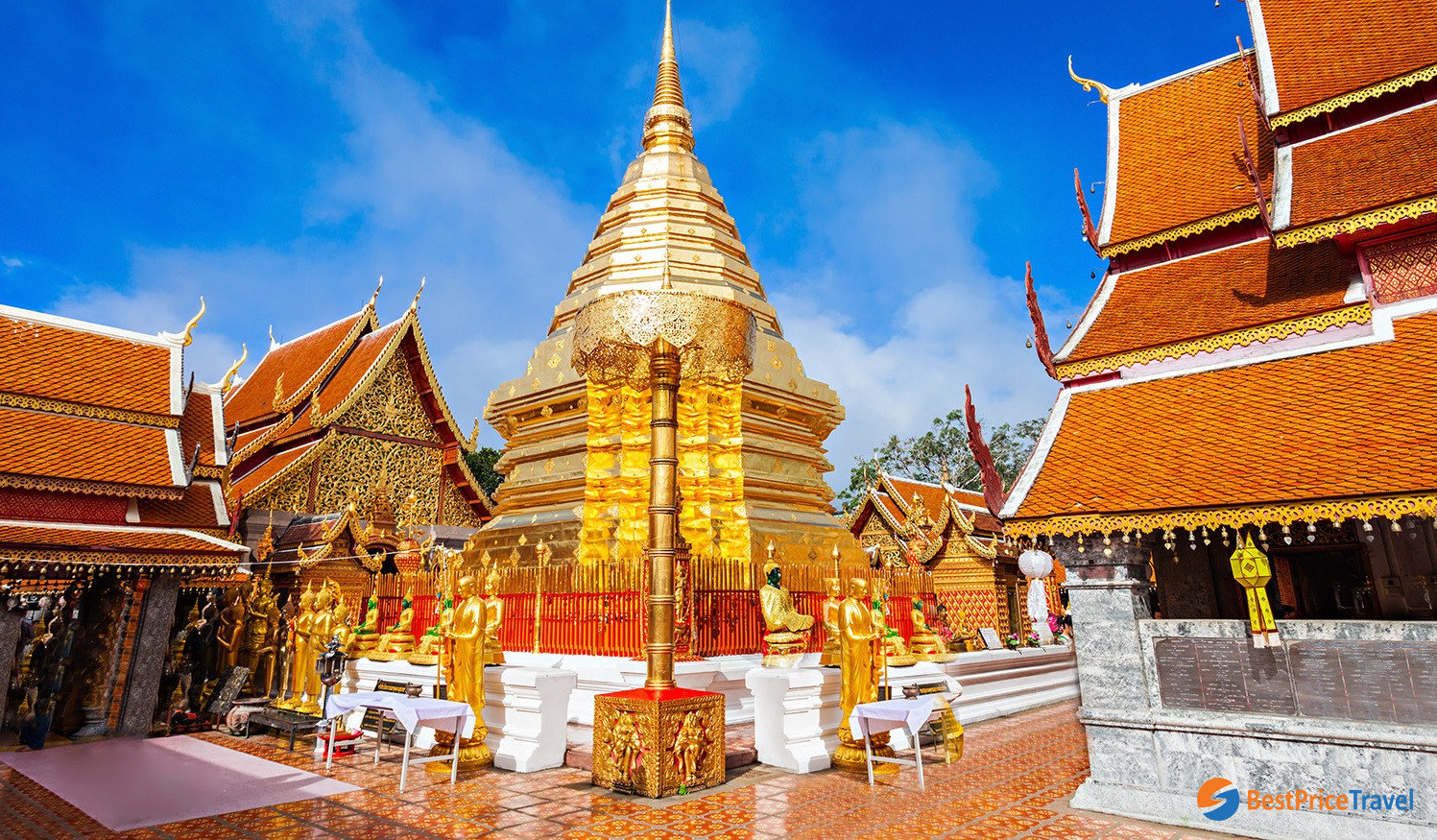
Wat Phrathat Doi Suthep
At the present, Chiang Mai still sits along the Ping River and plays the role of the house for over one million inhabitants, constituting over half of the population of the province. In addition, the overall population of Chiang Mai province is made up of different ethnic demographics like the Hmong, Akha, Yao and Karen, the homes of whom are popular tourist attractions.
Although the temple is obviously called Wat Phra That Doi Suthep, if you just call Doi Suthep anywhere in town, they may take you where you want to go. There are various versions of this temple’s history. What is known, though, is that this temple got its start when the stupa was constructed in the 14th century with many expansions which were built since then. Legend is clear that the remains contained in the Golden Stupa are the shoulder bone of the Buddha which was found when a monk had a dream where he was told to go find out a relic. After that, he found this shoulder bone, believed that it was of the Buddha. At some point in the history, the bone broke into two smaller pieces. The smaller one is enshrined somewhere else while the larger piece was brought to the top of Doi Suthep and on the back of a White Elephant. Or else, if you have set foot to the Wat Phra Kaew or Thai Royal Palace, your expectations are absolutely high when it comes to Thai architecture. However, Wat Phra That Doi Suthep can deliver. Because the temple is relatively close to Chiang Mai, 15 kilometers precisely, it can be reached easily by road. There, you can ask the cable car to take you to the temple. As the other way, you can take the Serpent Steps. The ‘Serpent Steps’ are a 309 - step stairway lined by gorgeously embellished Nagas which lead straight to the entrance of temple. It is considered as the longest Naga balustrade in all of Thailand as well.
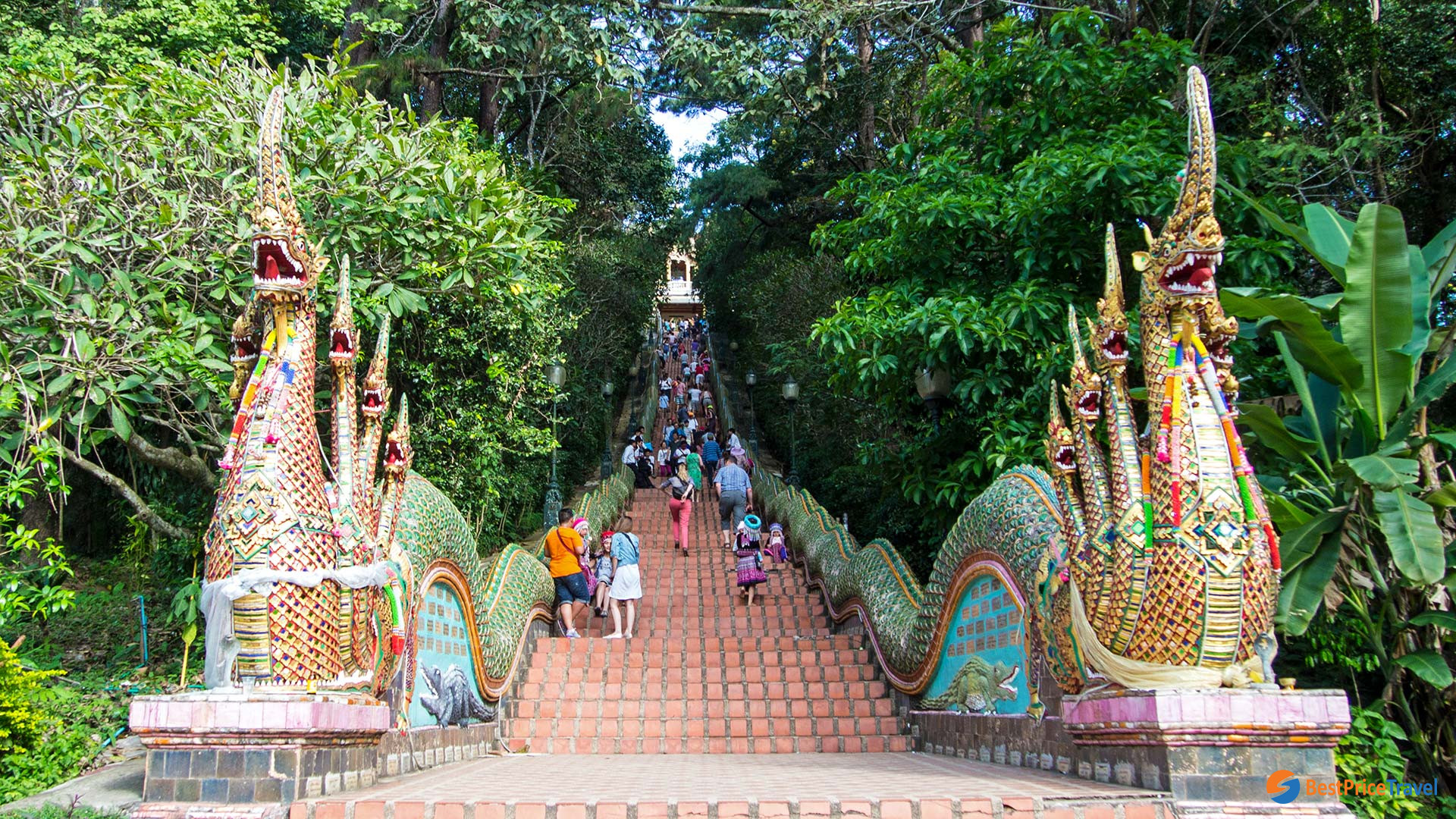
Steps to Wat Phrathat Doi Suthep
Once inside the temple’s mountaintop premise, you will be obviously greeted by the central chedi’s sight, a 24 – meter high construction and safe - keeping the relic. On a sunny day, the gilded exterior of chedi reflects every single ray of sunlight, brilliantly visible from far below. The middle section is a series of ever smaller octagonal tiers while the chedi is a gold - plated structure, angular at the base. The upper section features a same fashion except including rings and a tiered chatra – an umbrella – on top.
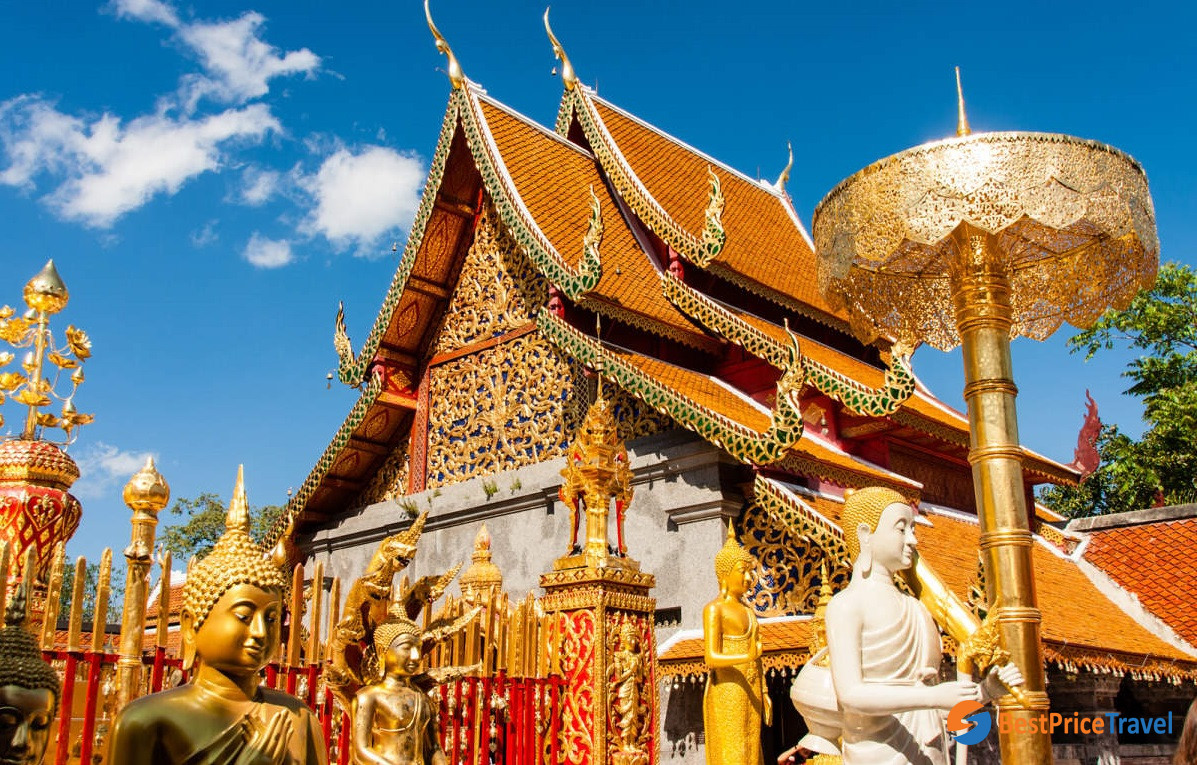
Wat Phrathat Doi Suthep
Taking a look from the chedi, you can see that the supplement structures fan out symmetrically, covering the relic in a rectangle of hallways. Situated at the South and North ends of the rectangle are two structures which are called ‘Wiharn’. As opposed to the conventional - parallel tri-tiered roof, the roofs of the wiharns consists of only two tiers, which are of different angles. The front of each wiharn is intricately and ornately adorned by golden colorful murals and religious designs. To the far left of the temple are the souvenir shop for the collector and the snack bar for the weary among visitors. To far the opposite site of the temple lies the International Religion Studies and the monks’ residence. If you venture to northernmost area of the temple, you can reach the museum. Nearby is where you can marvel at the entire of Chiang Mai from the top of Doi Suthep. The view from this site is simply and breathtakingly stunning. Beside, many beautifully decorated religious sculptures, bells, pagodas and shrines are littered across the entire temple for you to gaze in awe. As the temple draws inspiration from both Hinduism and Buddhism there are also some sculptures of the elephant - headed deity Ganesh and the Emerald Buddha. Another exciting attraction of the temple are the temple bells or rakhangs, which Buddhists touch in hope of having the good fortune.
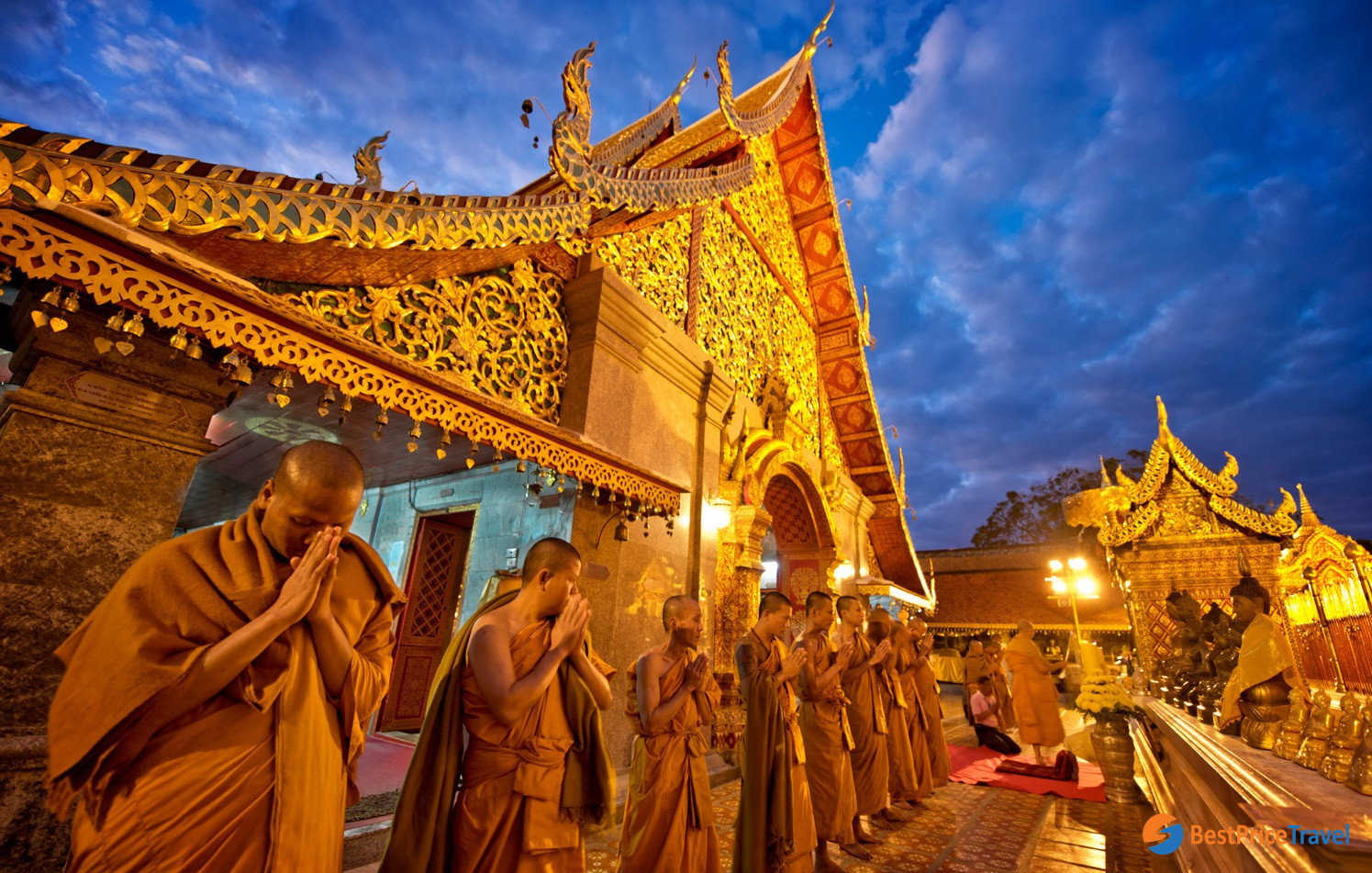
Wat Phrathat Doi Suthep
The location is regarded as the most unique part about this temple. You have to make the journey up the mountain, after that trek up the more than 300 steps to visit this extremely beautiful temple. In addition to just the journey to reach here, the view from the top is absolutely stunning and fascinating. At the left site, Naga figure at the base. And at the right one, if you look down from near the top of the staircase, you can take a private taxi, a motor bike, hike the monk’s trail or the red taxis up to the top. Once at the top of the windy - mountain road, you have to come over the infamous naga staircase. You have to climb up just more than 300 steps. There are vendors selling drinks and snacks at the bottom. After making the climb, you may purchase your ticket at the top.
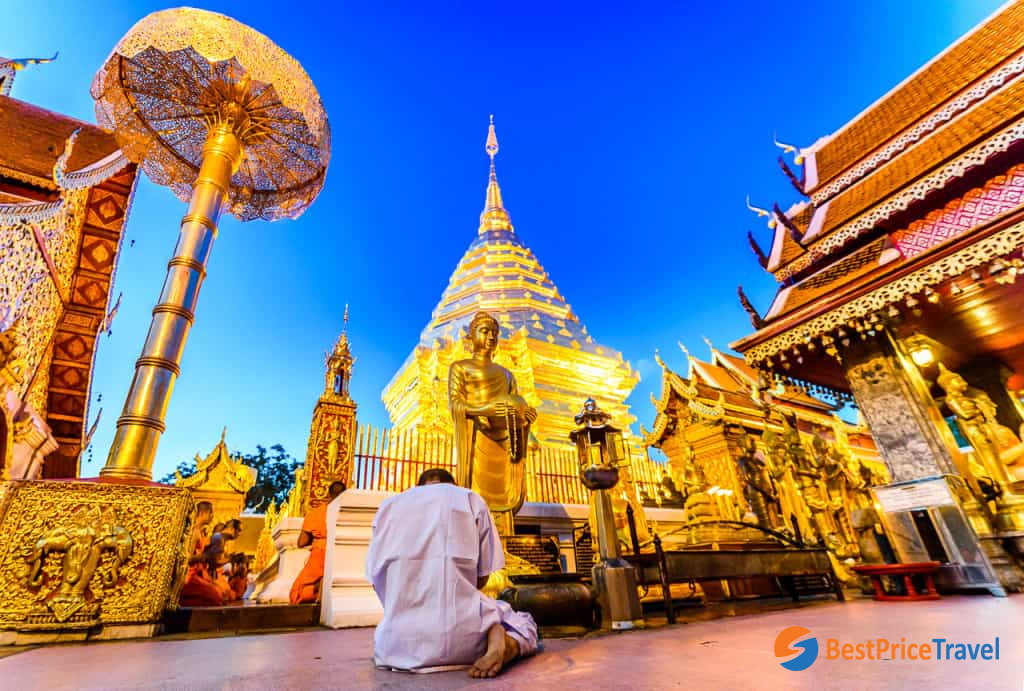
Wat Phrathat Doi Suthep
The best time to visit this amazing temple as well as the mountain is from December to March of the following year. The temple is open seven days a week, between 6 in the morning and 8 in the evening. Do make sure to time your visit rather carefully because the temple can be quite crowded with full of visitors all over the world during the weekends. The 50 – Baht entrance fee is currently applied to anyone to opt for the tram. But for those who get the choice of the Serpent Steps, their endeavor is repaid with only 30 Baht of admission fee. As for the park, the main of attractions are free of charge but there is a 300 - Baht fee for the Mon Tha Than Waterfall as well.
Trip that visit Wat Phrathat Doi Suthep
